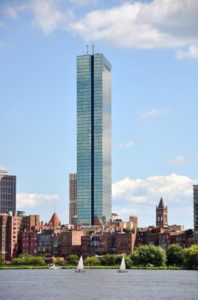Critical Load
This lesson explores the concepts of structural engineering and how to measure the critical load or the maximum weight a structure can bear. Students design and build a structure designed to hold increasingly greater weight, while determining the structure’s critical load.
- Learn about civil engineering and the testing of building structure.
- Learn about efficiency ratings and critical load.
- Learn about teamwork and engineering problem solving.
Age Levels: 8 – 14
Build Materials (For each team)
Required Materials
- 12 index cards
- 1 roll of tape
Alternative Materials
- Game cards (i.e. Uno), playing cards, pieces of cardstock
Testing Materials
- Plastic container to put the weight in
- Weight to test structure: coins, marbles, Legos, sand, etc.
Alternative Testing Materials
- Flat surface to stack weight (i.e. folder, cardboard, notebook, etc.)
- Weight to test structure: books, stacks of magazines, cans of food, etc.
Materials
- Plastic container to put the weight in
- Weight to test structure: coins, marbles, Legos, sand, etc.
- Separate weight into the containers in equal amounts adding up to a minimum total weight of 4 pounds
Alternative Testing Materials
- Flat surface to stack weight (i.e. folder, cardboard, notebook, etc.)
- Weight to test structure: books, stacks of magazines, cans of food, etc.
Process
- Each team should first predict the “critical load” of their structure and document it.
- Test each team’s structure by first placing the structure on the floor, on a table or on a desk.
- Begin carefully placing the containers of weight (one by one) on top of each structure.
- Try to stop placing the weight just before each structure meets the critical load (amount just prior to failure). Document the critical load of each structure.
- If the structure does collapse, document the last amount of weight it was able to withstand.
- Compare each team’s predicted critical load to the testing results. As a class, discuss the strengths and weaknesses of the designs.
An inside look at how 3 Civil Engineers are changing the world. (Video 6:22)
Source: ASCE YouTube Channel
Finding the strongest strength. Learn how different shapes relate to the strength of a structure. (Video 3:34)
Source: PBS Learning Media, Zoom
Earthquake-proof buildings? Explore ideas for earthquake proofing buildings with hands-on design challenges. (Video 5:57)
Source: QuadSquad YouTube Channel
Design Challenge
You are a team of engineers all working together, using the engineering design process, to design a structure using 12 index cards and tape to hold a minimum of 4 pounds of weight without collapsing. Before testing your structure, make a prediction of the critical load of your structure (the weight at which you think your structure will fail) and write it down.
Criteria
- Structure must hold a minimum 4 pounds of weight
Constraints
- Work in teams of 2-3
- Use 12 cards or fewer
- Cards may not be cut or torn
Procedure
- Break class into teams of 2-3.
- Hand out the Measuring Critical Load worksheet, as well as some sheets of paper for sketching designs.
- Discuss the topics in the Background Concepts Section.
- Review the Engineering Design Process, Design Challenge, Criteria, Constraints and Materials. If time allows, review “Real World Applications” prior to conducting the design challenge.
- Before instructing students to start brainstorming and sketching their designs, ask them to consider the following:
– What shapes are strong?
– Will the weights stack well or do you need a container to hold them?
– How big is the container to hold the weight and will it fit on top of their design? - Provide each team with their materials. Ask each team to predict the “critical load” of their structure and write it down.
- Announce the amount of time they have to design, build, and test their structure (1 hour recommended).
- Use a timer or an on-line stopwatch (count down feature) to ensure you keep on time. (www.online-stopwatch.com/full-screen-stopwatch). Give students regular “time checks” so they stay on task. If they are struggling, ask questions that will lead them to a solution quicker.
- After the teams have completed their structures, test the designs.
- Test each team’s structure by adding measurable weight (minimum of 4 pounds) to determine at what weight the team’s structure will collapse. This is each structure’s “critical load“ or amount just prior to failure.
- Teams then compare their predictions to their testing results and discuss their designs with the class.
After determining the “critical load” of each team’s design, it’s time to have some fun! Keep stacking weight on the designs until they are as flat as a pancake. - As a class, discuss the student reflection questions.
- For more content on the topic, see the “Digging Deeper” and “Real World Applications” sections.
Student Reflection (engineering notebook)
- What was your structure’s “critical load?”
- How close were you to your prediction?
- What aspects of your design do you think helped its ability to hold more weight?
- What aspects of your design do you think hindered its ability to hold more weight?
- What was the highest critical load in your classroom?
- What was the difference in the winner’s design and yours? Or…if your team had the winning structure, what do you think set your structure apart from the rest?
- If you could do your design all over….what would you change, and why?
- What human factors do you think a civil/structural engineer needs to take into consideration when planning an office building? (examples are the weight of people and furnishings, need for water, fresh air, escape routes)
Time Modification
The lesson can be done in as little as 1 class period for older students. However, to help students from feeling rushed and to ensure student success (especially for younger students), split the lesson into two periods giving students more time to brainstorm, test ideas and finalize their design. Conduct the testing and debrief in the next class period.
What Civil Engineers Do
Civil engineers are problem solvers, meeting the challenges of pollution, traffic congestion, drinking water and energy needs, urban redevelopment, and community planning. This activity focuses on the work of structural engineers who face the challenge of designing structures that support their own weight and the loads they carry, and that resist wind, temperature, earthquake, and many other forces.
Famous Building Failures

The John Hancock Tower in Boston, Massachusetts (right) is said to have been “known more for its early engineering flaws than for its architectural achievement.” Wind-induced swaying was so large, it was said to cause motion sickness for people on the upper-floors. This problem was solved by adding a pair of 300-ton dampers on the 58th floor. Another unrelated but serious problem was that 65 of its 10,344 floor-to-ceiling plate-glass window panes fell out of the building to the ground during construction — luckily no injuries resulted to either workers or passersby!
Efficiency Ratings and Critical Load
The efficiency rating measures the weight that will cause a structure to fail divided by the weight of the structure itself. The most efficient structures are strong and lightweight – a difficult combination to achieve. For example, roofers in areas which experience heavy snows must factor in the weight of a massive snowstorm into designing the strength of the roof. The weight at which a building or structure fails is called the “critical load.”
- Civil Engineers: Problem solvers, meeting the challenges of pollution, traffic congestion, drinking water and energy needs, urban redevelopment, and community planning.
- Constraints: Limitations with material, time, size of team, etc.
- Criteria: Conditions that the design must satisfy like its overall size, etc.
- Critical Load: The weight at which a building or structure fails.
- Efficiency Rating: Measures the weight that will cause a structure to fail divided by the weight of the structure itself.
- Engineers: Inventors and problem-solvers of the world. Twenty-five major specialties are recognized in engineering (see infographic).
- Engineering Design Process: Process engineers use to solve problems.
- Iteration: Test & redesign is one iteration. Repeat (multiple iterations).
- Prototype: A working model of the solution to be tested.
Internet Connections
Recommended Reading
- Stacking the Deck: Secrets of the World’s Master Card Architect by Bryan Berg
- Why Buildings Stand Up: The Strength of Architecture by Mario Salvadori
- Why Buildings Fall Down: How Structures Fail Architecture by Mario Salvadori
Writing Activity
Write an essay or a paragraph describing a recognizable building in your town. Include the history, interesting challenges to the building’s engineering, and challenges that the engineers faced in design and construction.
Alignment to Curriculum Frameworks
Note: Lesson plans in this series are aligned to one or more of the following sets of standards:
- U.S. Science Education Standards (http://www.nap.edu/catalog.php?record_id=4962)
- U.S. Next Generation Science Standards (http://www.nextgenscience.org/)
- International Technology Education Association’s Standards for Technological Literacy (http://www.iteea.org/TAA/PDFs/xstnd.pdf)
- U.S. National Council of Teachers of Mathematics’ Principles and Standards for School Mathematics (http://www.nctm.org/standards/content.aspx?id=16909)
- U.S. Common Core State Standards for Mathematics (http://www.corestandards.org/Math)
- Computer Science Teachers Association K-12 Computer Science Standards (http://csta.acm.org/Curriculum/sub/K12Standards.html)
National Science Education Standards Grades K-4 (ages 4-9)
CONTENT STANDARD B: Physical Science
As a result of the activities, all students should develop an understanding of
- Properties of objects and materials
CONTENT STANDARD F: Science in Personal and Social Perspectives
As a result of activities, all students should develop understanding of
- Risks and benefits
- Science and technology in society
CONTENT STANDARD G: History and Nature of Science
As a result of activities, all students should develop understanding of
- History of science
National Science Education Standards Grades 5-8 (ages 10-14)
CONTENT STANDARD E: Science and Technology
As a result of activities in grades 5-8, all students should develop
- Abilities of technological design
- Understandings about science and technology
CONTENT STANDARD F: Science in Personal and Social Perspectives
As a result of activities, all students should develop understanding of
- Risks and benefits
- Science and technology in society
CONTENT STANDARD G: History and Nature of Science
As a result of activities, all students should develop understanding of
- Nature of science
- History of science
Next Generation Science Standards Grades 3-5 (Ages 8-11)
Motion and Stability: Forces and Interactions
Students who demonstrate understanding can:
- 3-PS2-1. Plan and conduct an investigation to provide evidence of the effects of balanced and unbalanced forces on the motion of an object.
Engineering Design
Students who demonstrate understanding can:
- 3-5-ETS1-1.Define a simple design problem reflecting a need or a want that includes specified criteria for success and constraints on materials, time, or cost.
Next Generation Science Standards Grades 3-5 (Ages 8-11)
Engineering Design
- 3-5-ETS1-2.Generate and compare multiple possible solutions to a problem based on how well each is likely to meet the criteria and constraints of the problem.
- 3-5-ETS1-3.Plan and carry out fair tests in which variables are controlled and failure points are considered to identify aspects of a model or prototype that can be improved.
Next Generation Science Standards Grades 6-8 (Ages 11-14)
Engineering Design
- MS-ETS1-2 Evaluate competing design solutions using a systematic process to determine how well they meet the criteria and constraints of the problem.
Standards for Technological Literacy – All Ages
The Nature of Technology
- Standard 1: Students will develop an understanding of the characteristics and scope of technology.
- Standard 3: Students will develop an understanding of the relationships among technologies and the connections between technology and other fields of study.
Technology and Society
- Standard 4: Students will develop an understanding of the cultural, social, economic, and political effects of technology.
- Standard 6: Students will develop an understanding of the role of society in the development and use of technology.
- Standard 7: Students will develop an understanding of the influence of technology on history.
Design
- Standard 9: Students will develop an understanding of engineering design.
- Standard 10: Students will develop an understanding of the role of troubleshooting, research and development, invention and innovation, and experimentation in problem solving.
Abilities for a Technological World
- Standard 11: Students will develop abilities to apply the design process.
- Standard 13: Students will develop abilities to assess the impact of products and systems.
The Designed World
- Standard 20: Students will develop an understanding of and be able to select and use construction technologies.
Measuring Critical Load
Step One:
You have been provided with twelve (12) playing cards, some scotch tape, and scissors. As a team, and without altering (cutting for example) the cards, devise a structure that you think will hold up a two quart/64 oz/1.69L container without collapsing.
Question:
1. What is your team’s strategy or plan for construction?
Prediction:
1. Predict the “critical load” of your structure as you have designed it.
Step Two:
As a team, build your structure (prototype) for testing.
Step Three:
Your instructor will test your structure, and determine at what weight your team’s structure will fail by adding measurable weights (coins, sand, other materials) until it collapses. This is your structure’s “critical load.”
Questions:
1. What was your structure’s “critical load?”
2. How close were you to your prediction from Step One?
Reflection
Complete the reflection questions below:
1. What was your structure’s “critical load?”
2. How close were you to your prediction from Step One?
3. What aspects of your design do you think helped its ability to hold more weight?
4. What aspects of your design do you think hindered its ability to hold more weight?
5. What was the highest critical load in your classroom?
6. What was the difference in the winner’s design and yours? Or…if your team had the winning structure, what do you think set your structure apart from the rest?
7. If you could do your design all over….what would you change, and why?
8. What human factors do you think a civil/structural engineer needs to take into consideration when planning an office building? (examples are the weight of people and furnishings, need for water, fresh air, escape routes).






















